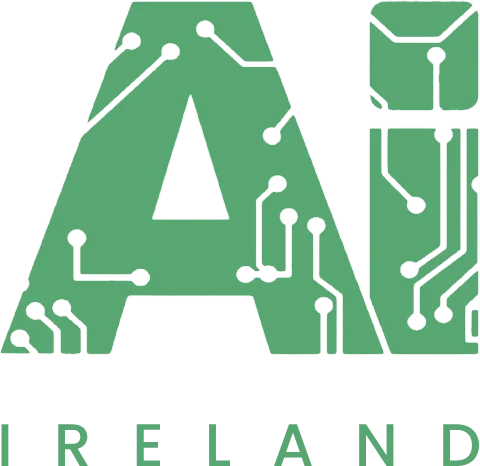Eoin Delaney
Nominated Award:
Best Application of AI in a Student Project and in Young AI Role Model of the year
Website of Company (or Linkedin profile of Person):
https://e-delaney.github.io/research/

University College Dublin (the company) is an educational institution; specifically, the nominee works across two research institutes in the School of Computer Science: the SFI the Insight SFI Centre for Data Analytics and the VistaMilk SFI Research Centre. Insight is one of the largest AI centres of its kind in Europe, with over 400 researchers, €100 million in funding, over 80 industry partners, and 8 research institutions. VistaMilk is an SFI and DAFM funded research centre directed at the one of Ireland’s largest indigenous sectors, the Agri-Food Dairy sector that is combining Agri and ICT expertise to innovate and enhance sustainability across the dairy supply chain.
The work was motivated by two considerations. First, the first 15 years of the AI research and development funded by SFI in Ireland mainly benefited the US/EU multinational technology sector (e.g.. Microsoft, Intel, Ericsson, IBM, Siemens) through partnerships with Irish Universities; the indigenous multinational, SME and start-up sectors hardly benefited at all. Hence, a guiding motivation for this work was to benefit Ireland’s indigenous sectors, specifically the Agri-Food sector, to provide advanced technology research and development support in AI to smaller firms (e.g., farmers and growers) and larger processors (e.g., food companies). Second, the work was also motivated by the technical challenges of explaining deep-learning black-box systems and the practical challenges of sustainability in the farming sector.
Reason for Nomination:
Eoin Delaney is a 3rd year PhD student at the Insight Centre for Data Analytics in University College Dublin where he is funded by the VistaMilk SFI research centre, supervised by Dr. Derek Greene and Professor Mark Keane. The focus of Eoin’s research is on explainable AI (XAI), specifically on how black-box AI models can be explained to developers and end-users using counterfactual explanations. For example, if I apply for a loan and am refused it by an automated decision-making system, GDPR demands that the end user has a right to an explanation. A counterfactual explanation, which is GDPR compliant, might say to the user “If you asked for a lower loan over a longer period, then you would have been granted it”.These sorts of explanations have to be generated by novel AI techniques, as they have to be able to deal with any query presented to the system. Counterfactual explanation techniques aim to do this; however, most of the work on these techniques has been applied to tabular data. Delaney developed a wholly-new, counterfactual technique designed to handle time-series data; this is the first such method in the AI literature (which is already highly cited and has won an international award). He then went on to demonstrate this technique in the context of a difficult real-world problem; namely, the prediction of milk supply on over 2,000 Irish dairy farms over extended time periods (e.g., a full year).
Eoin has 69 citations from 8 peer reviewed publications, including a best paper award winner at the 29th International Conference on Case-Based Reasoning. Eoin has given multiple presentations at A* machine learning conferences and workshops including the International Joint Conference on Artificial Intelligence (IJCAI) and the First Workshop on Algorithmic Recourse at the International Conference on Machine Learning (ICML). Eoin has won multiple bursaries including travel and accommodation scholarships at the Fifth AAAI/ACM Conference on Artificial, Ethics and Society (Oxford, UK) and the 30th International Conference on Case-Based Reasoning (Nancy, France). Eoin has presented his work to diverse academic, industrial and public audiences. He has presented his research to the Human Reasoning and Imagination Lab at Trinity College Dublin, the Accenture AI Research Team at the Dock and attendees at the Ploughing Championships in Co. Laois.
Much of Eoin’s research has been in collaboration with industry partners. He developed a novel and interpretable approach for long term milk supply forecasting using a data set supplied by Glanbia. He is also working on a collaborative project with Accenture on the development of counterfactual explanations for Trustworthy AI. Eoin has a passion for science communication and outreach and has been involved in the EU coding week initiative where he co-created YouTube videos to teach and promote computer science to primary school students. He also has a passion for open science and shares open source code with the scientific community on GitHub.
Time series classification (TSC) data is used in a variety of high stakes decision-making domains. For example in healthcare TSC is used to classify electrocardiogram signals as healthy or abnormal. Counterfactual explanations can highlight how a healthy signal would transform to look like if a patient was experiencing a myocardial infarction giving medical practitioners novel domain insights. In food spectroscopy TSC can be used to determine the provenance of different foods (e.g., near-infrared spectrographs can distinguish between Arabica and Robusta coffee beans or honey from different regions). Counterfactual explanations can identify discriminative portions of the time series for classification, aiding the design of cheaper sensors that consider a smaller portion of a time series or spectrograph. In deep learning systems counterfactual explanations can uncover portions of a time series that are prone to adversarial attack and show them to model developers. This is of crucial security importance as high level infrastructure (e.g., power plants) often monitor time series signals to detect abnormal behaviour and 3rd parties may want to maliciously change these signals whilst remaining undetected. One such notable case was in Florida where cyber criminals tried to modify the levels of sodium hydroxide in a water processing plant.
Additional Information:
Summary of Achievements
SCIENTIFIC: Eoin developed the first counterfactual method for time series classification data in the AI literature.
TECHNICAL: Developed a wholly-new Machine Learning technique for explainable AI. This XAI method has won a best paper award at ICCBR-21 (Salamenca, Spain).
SOCIETAL: The potential to impact many key aspects of society of this work is huge. As we saw earlier, it could be used in high-stakes medical scenarios where doctors need to quickly make diagnoses. It also may be used to uncover anomalies in data, such as the cybercrime example above.
ECONOMIC: The work has many potential applications in many different economic sectors. It has currently been applied in the Agri-food sector, the Irish Dairy Sector. Eoin’s work has been applied the forecasting of milk supply and the explanation of these forecasts. Irish farmers produced 8.75 billion litres of milk in 2021 and Irish dairy exports reached €5.1 billion according to a Bord Bia survey. Accurate long-term milk-supply forecasting plays a fundamental role in driving on-farm decision-making and processing capacity. Eoin developed a state-of-the art forecasting model for long-term milk-yield forecasting with data supplied by an industry partner (Glanbia) for 2000+ Irish commercial dairy farms. Comparative experiments demonstrated that the model developed by Eoin outperformed state of the art and naïve benchmark methods on several popular evaluation metrics.
A core challenge was the noisy nature of the real world milk supply data that was provided by an industry partner. The data contained periods of missing supply records from individual farms and the collection schedule of the milk tankers was irregular. Many of the previous solutions in the literature operated on detailed data from research herds where precise information about individual cows was available. Eoin developed a case-based reasoning (CBR) solution, where k-NN is used to find a small number of nearest-neighbour farms based on some similarity metric (i.e., not necessarily spatially-proximate farms) and then use their data to augment the dataset for the time series predictions. A further fundamental contribution of this work was also in providing explanations to dairy farmers on practices that they could implement to (i) improve future yield and (ii) improve future milk quality and (iii) improve on farm sustainability. This work has been extended into a collaboration with the Accenture AI Lab in Dublin, as part of the VistaMilk research programme.
